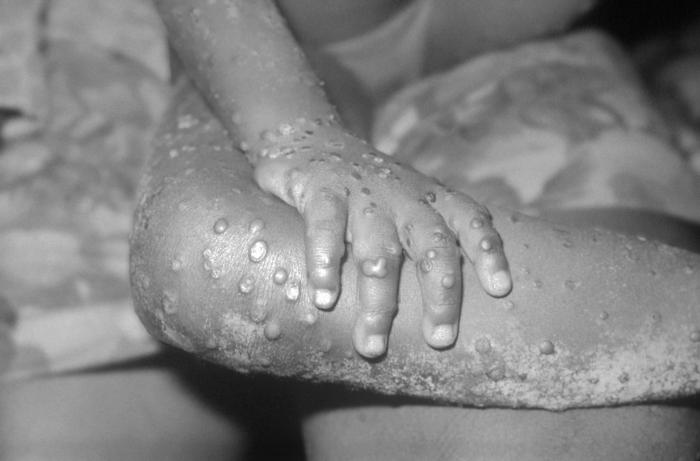The monkeypox outbreak declared by the Government of Congo on 13 March 2017 remains active. During reporting week 13 (week ending 31 March 2017), 6 new cases were reported from three districts, distributed equally (2 cases each) among Betou, Dongou and Impfondo.

As of 28 March 2017, a cumulative of 26 suspected cases including 4 deaths (case fatality rate of 15%) have been reported since onset of the outbreak on 21 January 2017.
The outbreak has so far been localized to Likouala Province where four districts have been affected: Betou (6 cases, no death), Dongou (13 cases, 2 deaths), Enyelle (4 cases and 1 death) and Impfondo (3 cases, 1 death).
The index case in this outbreak was found to have originated from Manfouété town, Dongou district. Manfouété is an isolated town with limited communication network (telephones and internet access), road transport, lack of electricity, inadequate numbers of trained health workers, and low health service coverage.
In addition, the high population movement between Congo, the Democratic Republic of Congo and Central African Republic, including influx of refugees from these countries and others like Chad, poses a high risk of propagation of the outbreak to other provinces of Congo and the neighboring countries.
According to the CDC, the symptoms of monkeypox are as follows: About 12 days after people are infected with the virus, they will get a fever, headache, muscle aches, and backache; their lymph nodes will swell; and they will feel tired. One to 3 days (or longer) after the fever starts, they will get a rash. This rash develops into raised bumps filled with fluid and often starts on the face and spreads, but it can start on other parts of the body too. The bumps go through several stages before they get crusty, scab over, and fall off. The illness usually lasts for 2 to 4 weeks.
Rodents, such as rope squirrels, door mice and pouched rats, are the suspected reservoir hosts, with monkeys and humans as secondary, spill-over hosts.
People at risk for monkeypox are those who get bitten by an infected animal or if you have contact with the animal’s rash, blood or body fluids. It can also be transmitted person to person through respiratory or direct contact and contact with contaminated bedding or clothing.
There is no specific treatment for monkeypox.
Related:
- Typhoid outbreak: ‘We do not know how or when it got into Auckland’
- Pertussis booster shot in pregnant women reduces risk for newborns by more than 90 percent
- Cebu: Human rabies death reported in Mandaue City
- Zimbabwe typhoid outbreak: 1800 cases since October
- Measles infection in Iceland, first time in 25 years
- Chickenpox sends 3,000 to the hospital each year in France

